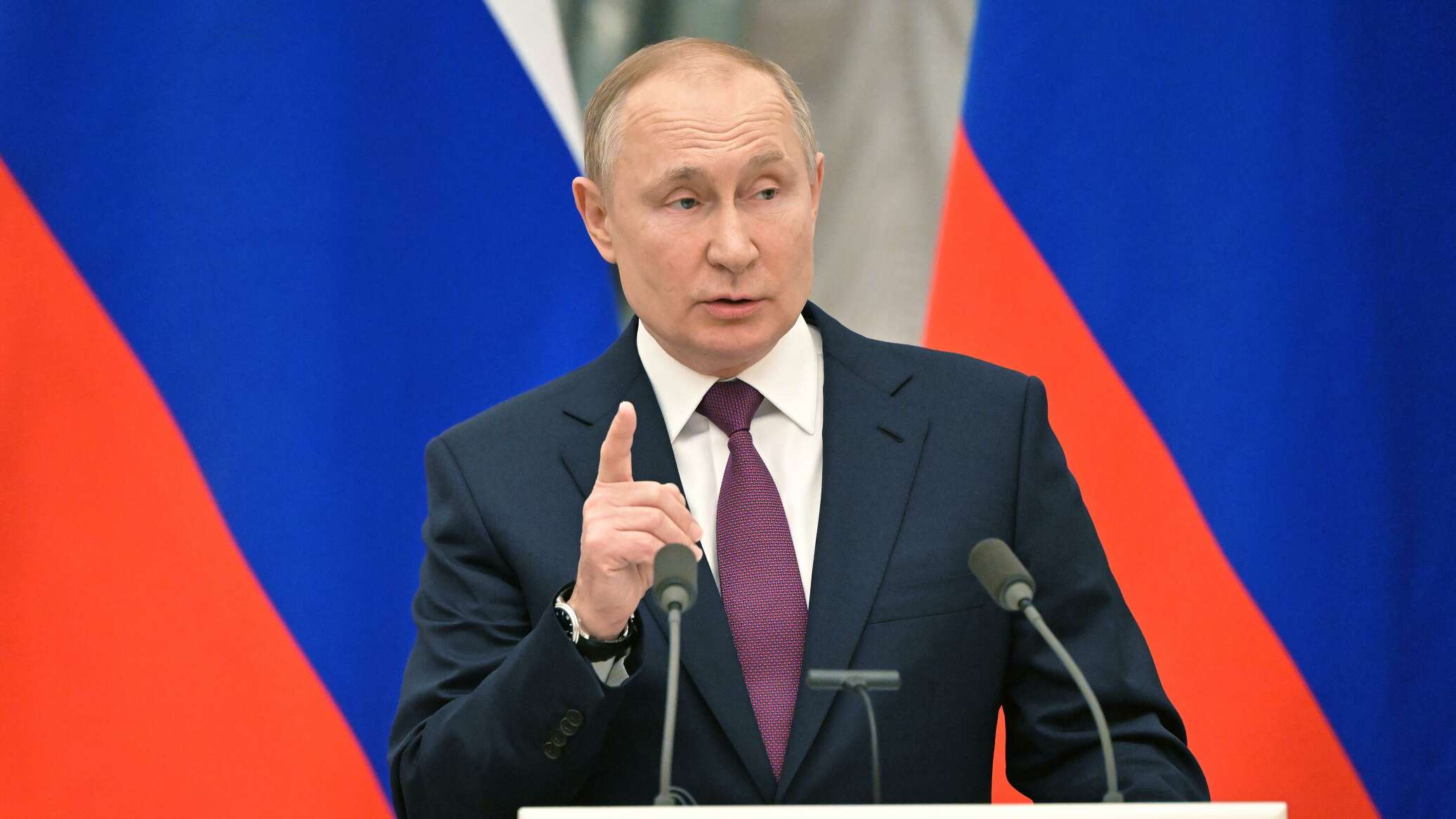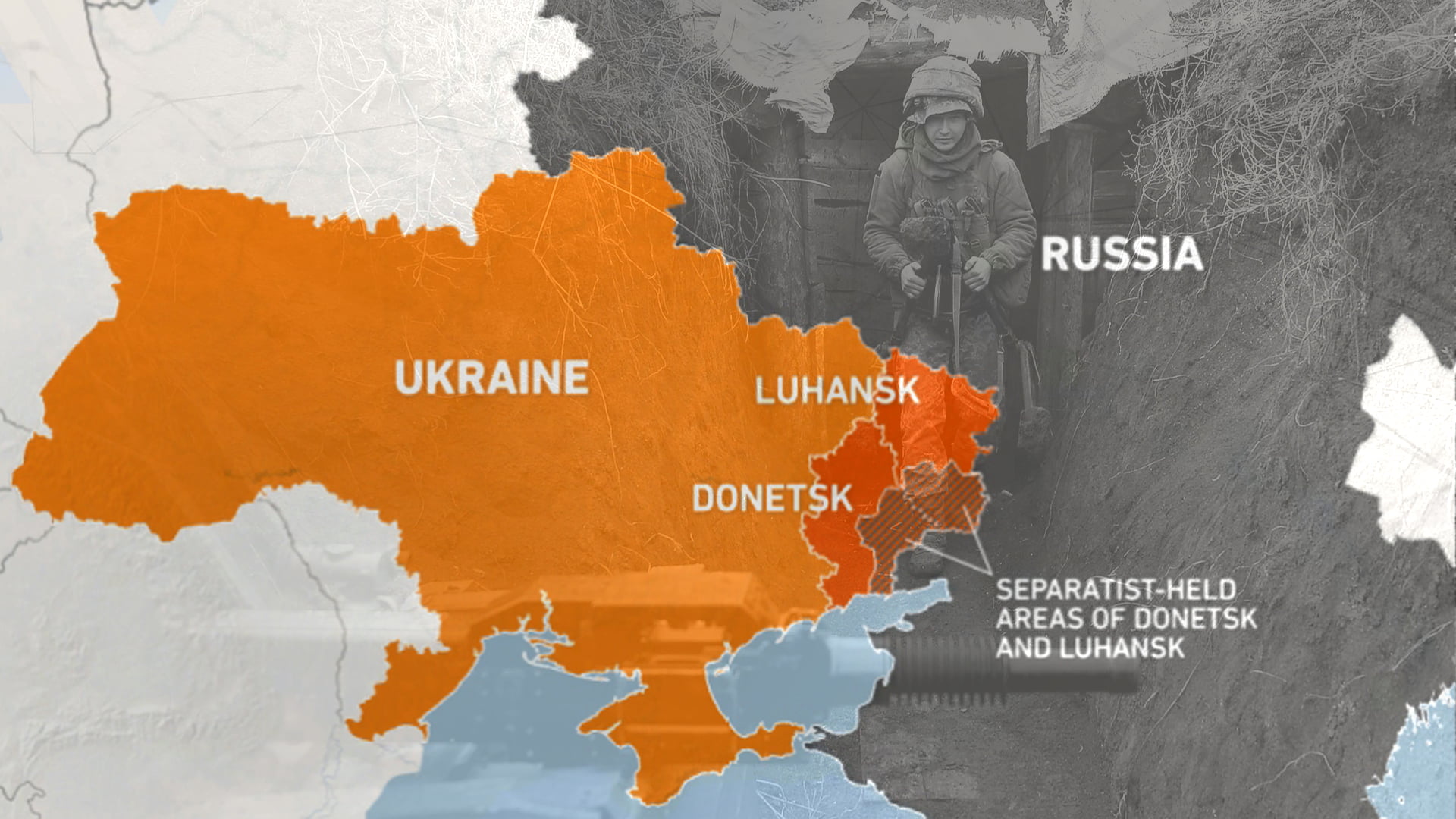
On Wednesday, January 26, 2022, the U.S. provided its official written response to the Russian state’s list of security demands. While the documents weren’t made public, U.S. Secretary of State Antony Blinken said that the U.S. did not agree to Russia’s request about Ukraine never joining NATO or the membership of other post-Soviet bloc states.
Two days later, Russian President Vladimir Putin told French President Emmanuel Macron the U.S. ignored our demands.
Russian Senator Vladimir Dzhabarov, First Deputy Chairman of the Federation Council Committee on Foreign Affairs, provided more detail about where the Russian state’s thinking is, saying the U.S. is heading for a “direct confrontation.”
For this brief, Overwatch analysts focused on Russia’s continued aggression on the world stage and spoke with multiple sources in Ukraine with backgrounds in the military, human rights, and law. Their comments provide an on the ground perspective of what is happening in Ukraine and how Ukrainians are preparing should Russia invade.
In addition, we spoke to intelligence professionals in the U.S. with expertise on Russia and asked them about their primary concerns.
THE CURRENT SITUATION
Since our January 13, 2022, brief, the Russian state has only increased the military buildup on the Russia/Ukraine border and its military assets in Belarus. Additionally, with our first brief on Russia/Ukraine, Overwatch analysts assessed that should Russia invade Ukraine, they would likely target U.S. entities with cyber-attacks, and spread disinformation in the digital space.
On January 26, 2022, the Department of Homeland Security warned that Russia could consider a cyber-attack against the U.S. if they felt a threat to their long-term national security. According to DHS, these attacks range from “low level denial of service to more destructive attacks against critical infrastructure.”
Russian disinformation in the digital space continues to increase. Here are some examples of what we have seen thus far.
On January 27, 2022, Tsargard TV owner Konstanin Malofeev, sanctioned by the U.S. Department of Treasury in 2014 for funding armed groups in Ukraine, said that the U.S. is creating false information about Russian aggression.

Image Credit: Screenshot/Vk.com
On January 28, 2022, RT (Russian state media) claimed that an anonymous EU source said that NATO knows Russia doesn’t have enough forces on the Russia/Ukraine border to invade, despite the U.S. assessment that Russia could invade Ukraine with its troop numbers.

Further, pro-Russian accounts on social media are pushing narratives that the U.S. is “sacrificing” Ukraine and that NATO needs war to survive.
In our January 13, 2022, brief we also assessed that Russia would likely help the Donetsk People’s Republic (DPR) and Luhansk’s People’s Republic (LPR) should an invasion occur. Overwatch research identified an interview between anti-American news anchor, Vladimir Soloviev, and the DPR’s Deputy Chief of the People’s Militia Directorate, Eduard Basurin, where Basurin claims that the Russian state is going to supply it weapons that it needs, including air defense and electronic warfare systems, artillery fire systems, and reconnaissance equipment.
Further, on January 29, 2022, Viktor Vodolatsky, a member of the Russia’s State Duma, called on people in Donbas, the frontline of the war in Ukraine, to join the Russian military. Vodolatsky said, “If Russian citizens residing in the (territories) want to join the Russian Armed Forces, the Rostov regional military commissariat will register and draft them.”
THE U.S. POSITION
On Friday, January 28, 2022, U.S. Secretary of Defense Lloyd Austin said that Russia now has the capability to invade Ukraine.
On Saturday, January 29, 2022, U.S. officials reported that Russia has moved blood supplies to the Ukrainian border, which would help them sustain a long-term conflict.
In addition, Pentagon Spokesman John Kirby said that several U.S. military units had been placed on heightened preparedness should Russia move into Ukraine. The units include elements of the 82nd Airborne Division, 18th Airborne Corps, 101st Airborne Division, and Fourth Infantry Division.
President Biden also said he is also moving a small number of troops to Eastern Europe and NATO countries.
VIEWS IN UKRAINE
Roman Kulesha volunteered for the Ukrainian Armed Forces in 2014, serving most of his time as a Company Commander.

Image Credit: Roman Kulesha
Kulesha is concerned about reports of medical support on the Russian/Ukrainian border. He said, “I think this is an indicator of a possible start. Because the wounded can be evacuated by air, and they can be taken to the evacuation point by battalion medics. They can also expect to use the seized hospital buildings in the first settlements. We must look at the number and type of armored vehicles and the transfer of troops from the opposite end of the map to our borders. When we do, we see clusters of both heavy groups for storming settlements and opposing our troops and light groups for detours and maneuvers.”
Kulesha also explained how Russia’s Ministry of Emergency Situations operates in Donbas, transporting medical supplies and weapons. He told Overwatch that an increase in numbers in Donbas from Russia’s Ministry of Emergency Situations could suggest that things are escalating.
Additionally, Kulesha believes Belarus could join a potential conflict. “There is also a risk that Belarus will also take part on Russia’s side. Lukashenko is very friendly with Russia.”
David Plaster is a U.S. Army veteran and ex-pat who has lived in Ukraine for ten years. Since 2014, Plaster has trained Ukraine’s National Guard, Special Operations, Armed Forces, and Volunteers, now Territorial Defense Forces.

Image Credit: David Plaster
Plaster does see an escalation in the future. But he says if Russia does invade, it will have a guerilla war on its hands.
“There will be some escalation, but I’m not sure where. A few days ago, a guy in the National Guard of Ukraine took a bunch of weapons and killed several people. The Chief of the National Guard resigned over the incident,” Plaster said.
He supports the possibility of a false flag attack, which matches the U.K.’s report from January. “There could be a false flag attack by the Russians. Russia is going to react to something, whether it is a real or perceived threat.”
He said that a sign that things are getting more serious would be the mobilization of Ukraine’s reservists.
Plaster also shared information about Ukraine’s civilian defense force. “We have over 100,000 members of our civilian defense forces. These are veterans, IT workers, business leaders, single moms, farmers, and hunters, with a strong desire to protect their country. They are learning how to shoot, provide medical support, and other soldiering skills. And the force is growing larger every day.”
Plaster added, “Despite the fact that Russia invaded Ukraine 8 years ago, Ukrainians aren’t looking to “start” a new fight, but she is prepared to finish it.”
Olha Reshetylova is a journalist and human rights activist in Ukraine.

Image Credit: Olha Reshetylova
Reshetylova said that the police are getting fake threats on schools and hospitals daily. “Every day, police get dozens of mine notifications of schools, hospitals all over Ukraine.”
Reshetylova told us that Ukraine has lived with knowledge of additional Russian aggression for the last eight years. “For the last eight years Ukrainians live with the knowledge that invasion will happen, earlier or later That’s why there is no fear or big panic. But the feelings are not pleasant as well. It is uncomfortable to realize that someone behind our back decides whether we live or not, will we have civilized state or not.”
Iryna Koida lives in one of the border regions of Ukraine. She works as an educator and member of an NGO.
Koida said that there is anxiety in her area about the Russian military buildup. When we asked her if her more rural area would resist a Russian invasion, she said, “Rural regions are much more passive. But in case of invasion, we would have a massive underground movement.”
Joe Place is a British ex-pat and Ph.D. student.
Place said he is prepared for the worst but remains calm about the situation. He shared the general sentiment in Ukraine about the issue. “So, I’ve encountered three sentiments. One is, eh, this has happened before. I can’t do much anyway, so whatever. Two, is I am prepared but calm, and three, is “f*** war is coming. I’m strapped and ready, but it’s the minority. Two is the majority, I’d say.”
Oleg Berezuik is the Head of the Law Society of Ukraine and a former member of the Soviet Armed Forces.

Image Credit: Oleg Berezuik
Berezuik said, “At one time I served in the airborne troops, back in Soviet times, so I have a pretty good idea of the Russian armed forces. In short, in their current state, they are not able to conquer Ukraine, much less keep it. In 2014, we had a much worse situation than today.”
“Next. Russian propaganda in Ukraine works almost with impunity. The measures taken by the president are ineffective. The problem is the lack of staff with relevant experience who could organize counteraction.”
“As for Ukraine’s readiness for a wider invasion, in the absence of the competence of the current heads of state, there are risks of seizing Ukraine by special services rather than military.”
INTELLIGENCE PROFESSIONALS WITH RUSSIAN EXPERTISE
Frank Montoya Jr. Is a former FBI Special Agent in Charge in Honolulu and Seattle, and NCIX, National Counterintelligence Executive to the Office of the Director of National Intelligence, now Director of the National Counterintelligence and Security Center. In his role as NCIX, Montoya Jr. was the head of counterintelligence for the U.S. government.

Image Credit: Frank Montoya Jr.
Montoya Jr. shared his top concern about the Russia/Ukraine border situation. “No question, there is always a possibility that a Russian invasion leads to a wider armed conflict with NATO. Several NATO members share borders with Ukraine. And three that share a common border with Russia and Belarus, a close Russian ally. It wouldn’t be the first time in European history that a domino effect has swept Europe as the result of a nation-on-nation confrontation.”
Montoya Jr. also shared his view on what kind of escalation would benefit Russia. “The Russian Foreign Minister, Sergey Lavrov, said that the U.S. and NATO written responses to Russia’s concerns about eastward expansion failed to address their concerns. That can be viewed as the latest Russian “justification”—at least in the old days they tried to make the saber-rattling sound legitimate—for some kind of armed intervention.”
“But even a limited act—an incursion, for instance will likely escalate. It appears the Ukrainians are better armed and trained than when the Russians first went into the Donbas and if they manage to embarrass the Russians, it seems likely, especially after all his posturing, that Putin will have to escalate…to save face with his domestic audience, if for no other reason. By the same token, if Putin’s forces smash initial Ukrainian opposition, who is to say he’ll stop at the Donbas? Why not go on to Kyiv? And what will NATO do? Especially if Poland, Romania, or the Baltic nations begin to panic? The biggest x-factor in all of this is Putin himself. Does he even know what he’s going to do?”
Josh Manning is a former Defense Intelligence Agency and United States European Command analyst.

Image Credit: Josh Manning
In our interview with Mr. Manning, Overwatch asked him what his biggest concern is with the military buildup on the Russia/Ukraine border.
Manning said, “The number of assets going into Belarus for ‘military exercises.’ They are perfectly parked for a combined arms operation into Kyiv. Russian airborne forces are the vanguard of the military. Best trained major force and really experienced. We watched them deploy early to areas north of Georgia in 2008 as a major indicator.”
“There are also forces coming into the Central Military District. So, to draw down troops from the capital, suggests they are tossing the whole kitchen sink into the Ukraine area. They are sending guys who were fighting in Syria, Donbas, and Georgia, which shows they are sending people with combat experience.”
OUR ASSESSMENT
The Russian state may respond to the U.S. deploying a small number of NATO troops in Eastern Europe and NATO countries by adding more military assets on the border with Ukraine, or Belarus, escalating the situation, or with rhetoric, criticizing the decision on the international stage. Any further Russian military buildup will likely result in the U.S. placing additional military assets into NATO countries. As Russia demands that NATO decrease its presence in Eastern Europe, strengthening NATO will lead to Russia taking a more aggressive stance against the U.S., further deteriorating already fragile relations between both countries.
The U.S., the U.K., France, Spain, Poland and Estonia — all members of NATO — are providing military support to Ukraine. The continued military support from NATO countries, in addition to increases in security in NATO countries, as we assessed would take place with our January 13, 2022, brief, could potentially deter the Russian state from launching an invasion of Ukraine. Should Putin invade, Overwatch foresees Russian state media like RT, TASS, and Ria Novosti and Russian troll farms (Internet activists working on behalf of a foreign government to manipulate public opinions) will flood the digital space with disinformation about the U.S. and NATO, promoting conspiracy theories about the U.S. government, U.S. military, and North Atlantic Treaty Organization.
Additionally, the call from Russian politicians for Ukrainians in Donbas to join the Russian military could potentially lead to more conflict in the region, as both the LPR and DPR are supportive of the Russian state. As the State Duma voted to recognize the LPR and DPR in February 2022, Overwatch analysts assess that Russia may still annex one of the self-proclaimed states.
The sentiment in Ukraine is that Ukrainians are more prepared militarily for an invasion than in 2014. Should Russia invade, they would have to fight against Ukraine’s military, partly trained by the U.S. and European partners, in addition to a growing civilian defense force. The Russian state would face significant opposition in both rural and populated areas. The potential conflict would lead to many Russian casualties, with Russian forces facing a prolonged guerilla war.
Any further buildup of medical support or emergency services from the Russian state on the border or in Donbas could indicate that the Russian military is planning a more extensive operation in Ukraine.
The Russian state will continue to target the U.S. with disinformation regarding the conflict in Ukraine. Additionally, as assessed in our previous brief on Russia/Ukraine, cyber-attacks against the U.S. and its partners are likely, should Russia invade Ukraine or with any further escalation between the U.S. and Russia occur.
















































